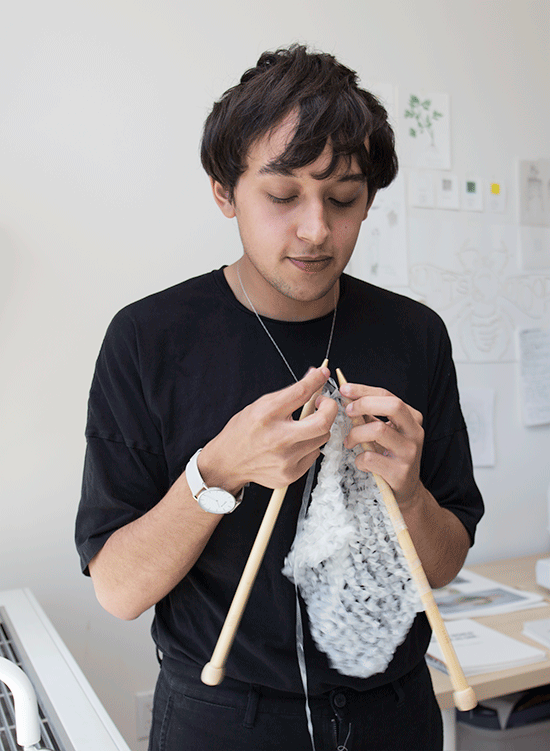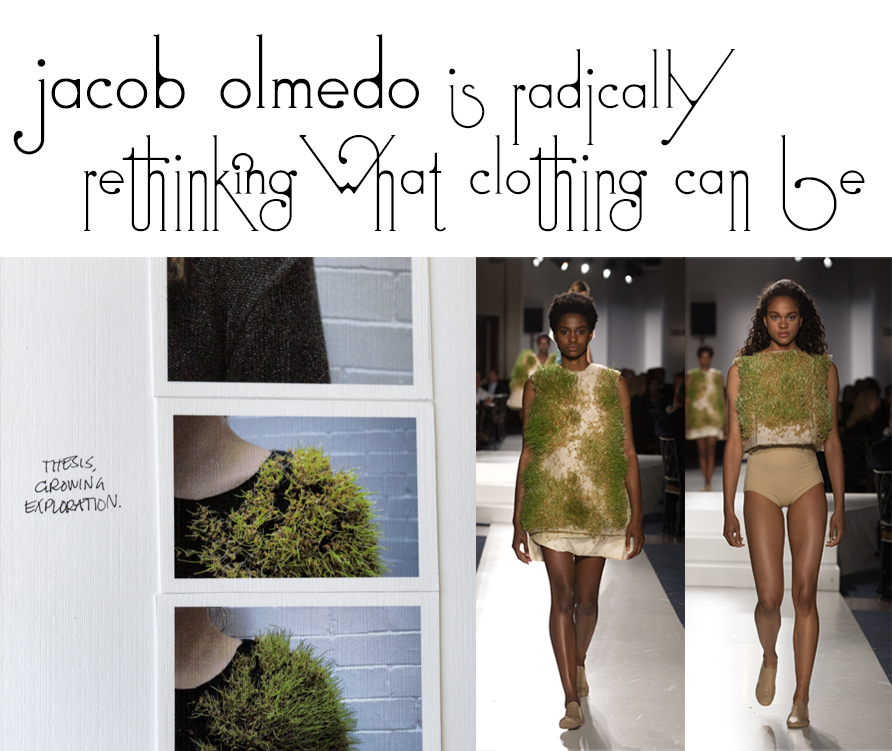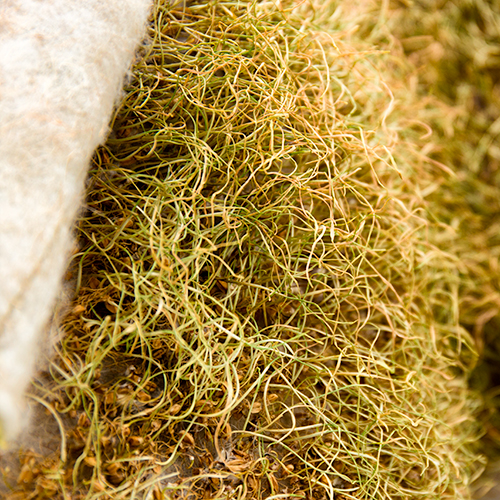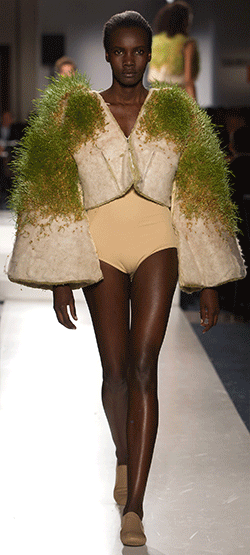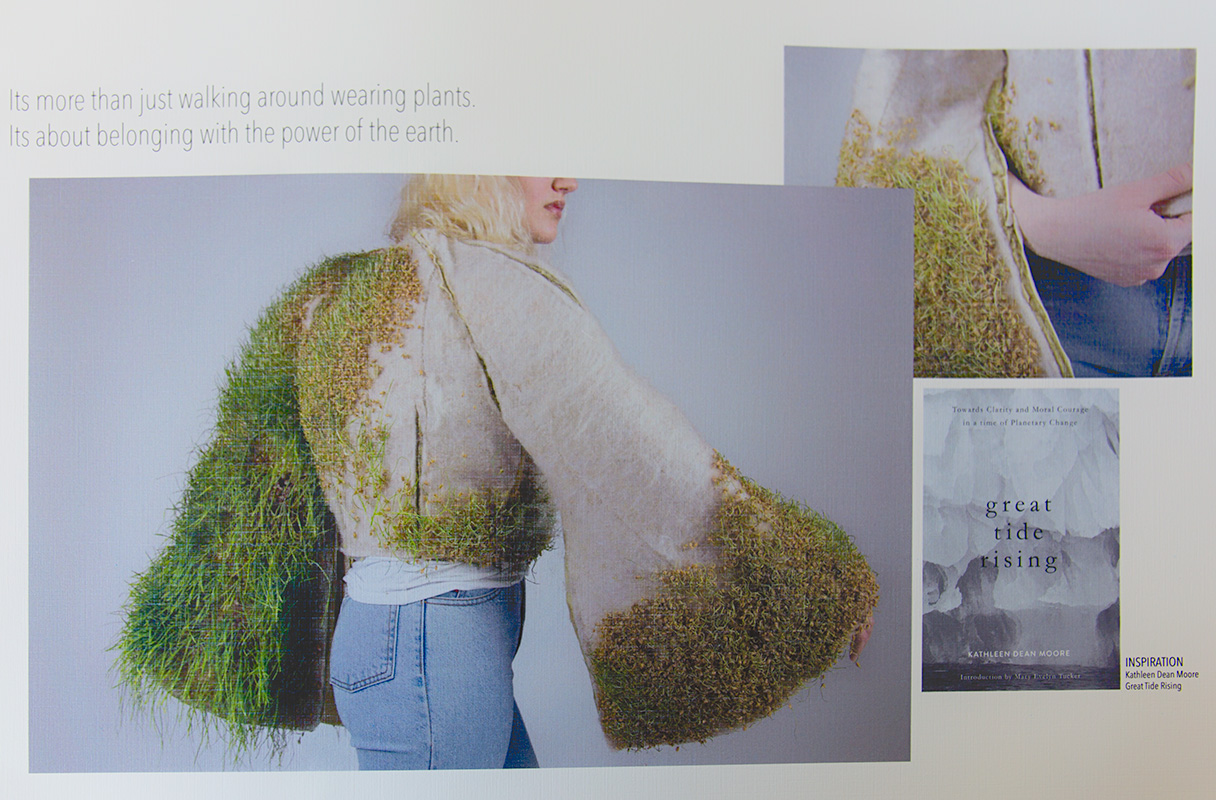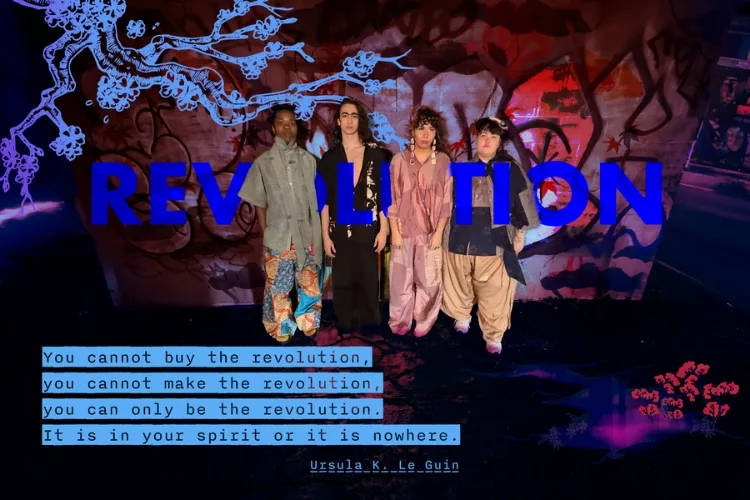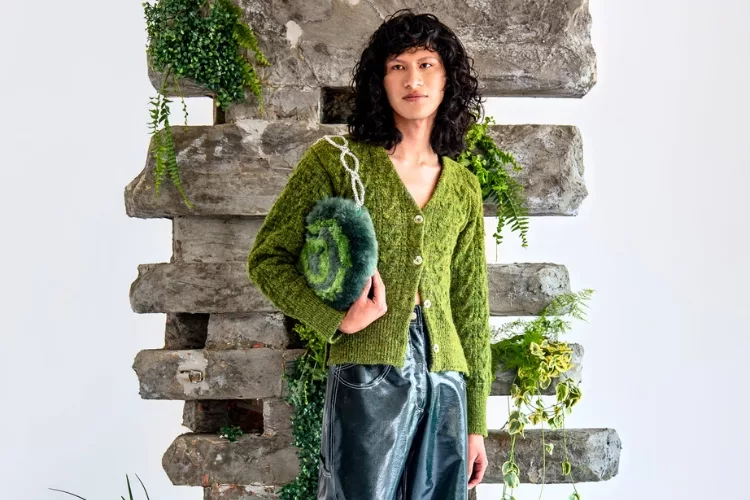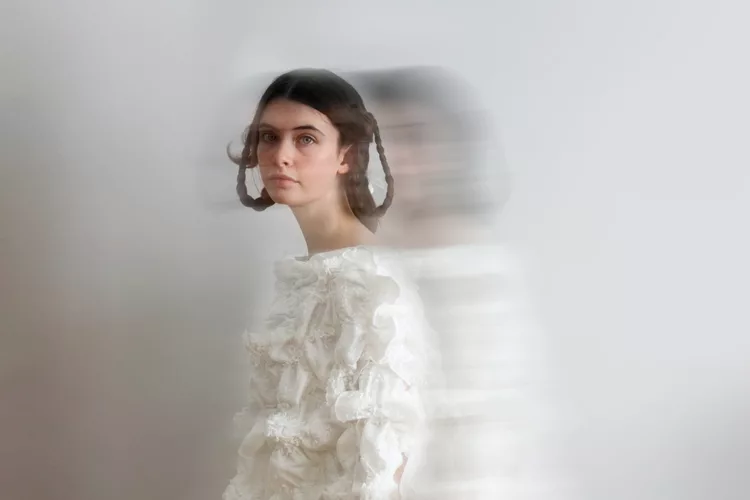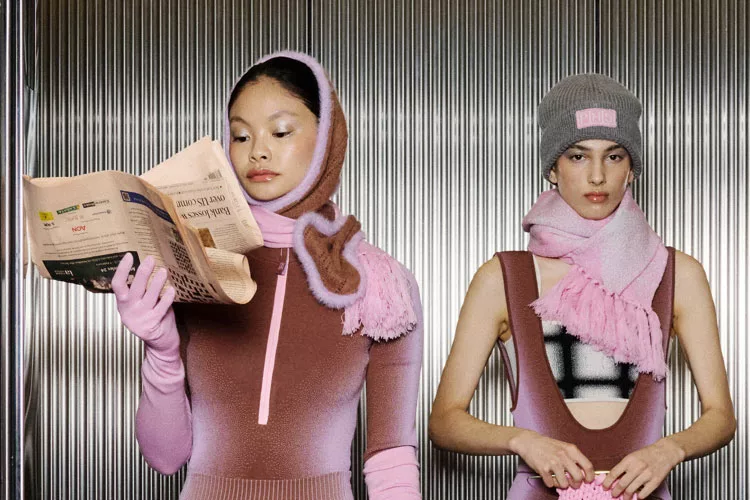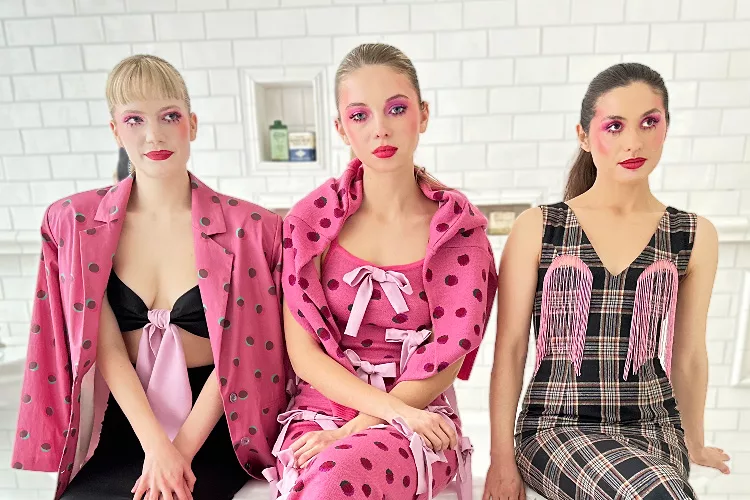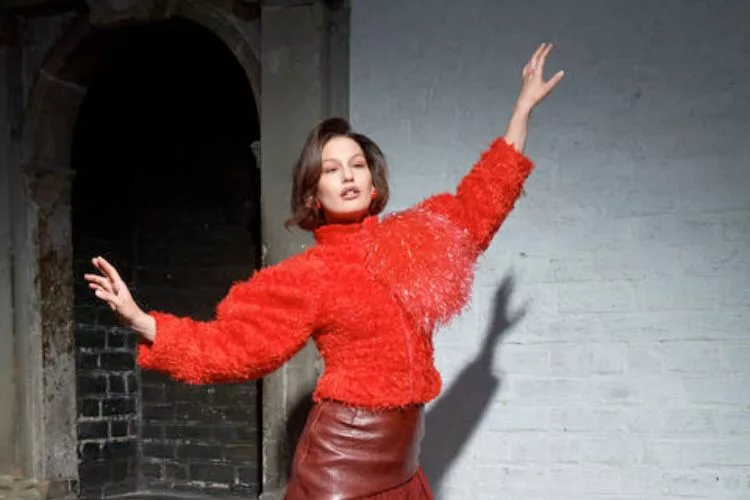As summer is coming to a close and our attention is shifting to fall there have been concerns within the sustainable fashion community that some of what is getting hyped by the mainstream press is only borderline sustainable or ethical. Which is completely the opposite of the designer we recently interviewed, Jacob Olmedo, who is a recent grad of The New School’s Parsons School of Design.
Parsons has a reputation for commercial work over experimental but that assumption was turned on its head with the inclusion of Olmedo’s thesis collection entitled And The World Will Be As One. In his collection wheat grass grows from the neutral-toned organic fabric that is as alive as the models who wear it.
We sat down with Jacob and discussed his collection, its connection to nature and the broader impact of our interaction with the environment.
Hi Jacob. So give us a little background. Where are you from?
I’m originally from Sheboygan, Wisconsin on Lake Michigan so growing up I was always on the lake. My grandmother taught me how to sew. And we’d do little projects like “Oh let’s make a pillow case!” and so I began sewing as sort of a hobby.
And from that you wanted to be a designer?
Not at first. I attended an arts infused project based charter school Etude High School which has now become IDEAS Academy. What that means is they’d ask you to take an academic form and transfer it into an art project. You created something new from your research and then present the project to the school and also the larger Sheboygan community. We did this every semester and once I hit sophomore year fashion became a mechanism to discuss larger issues. For example as part of a larger collaboration based on everyday items we take for granted I designed an entire collection by upcycling paper.
Talk a little bit about your evolution into sustainability – because it was really a process, which I think is true for most people.
I think that was something that developed at Parsons. Part of the curriculum is a course about sustainable systems. We looked at the city of New York and what systems are sustainable. That was the first course where I thought, “Okay this is really interesting and these are things I’ve looked at before but somehow looking at it within the context of a fashion program makes me really see it.”
Then Sophomore year I took Fashion and Narrative taught by Joshua Katcher who owns Brave Gentlemen the menswear brand and he’s vegan, and a sustainable brand. I went to the course thinking “Fashion narrative -they’re going to talk to us about how to create a collection, how there can be a narrative in the collection.” He upended that. He suggested that there is a hidden narrative in fashion and we need to discover it, uncover it.
Was this a little transgressive?
I think he definitely put his own spin on it! It’s Sophomore year now and they tell you to make garments, make garments, make garments. You battle with this idea of keep making, keep making but there are so many important things we need to be thinking of while we’re making these things. And I kept digging deeper and deeper. Going into Junior year, I did a complete systems project I really did a lot of research – I took a bee-keeping workshop, I did natural dying workshops.
Through these explorations I realized that what I wanted to do was think about fashion systems as a whole. Let’s be people who are thinking of our world in a critical way. So I began looking at the fashion system we have now and dissecting every single thing: What’s the fabric made out of? What’s it dyed with? Where is it being manufactured? Who’s manufacturing it? What is the life of these people who are manufacturing it?
Okay, I have to ask: How do you even come up with this idea “I want to make clothes that grow!” with this collection, you’re also something of a gardener…
I was influenced by the book Great Tide Rising by environmentalist philosopher Kathleen Dean Moore. It’s about this relationship we used to have with nature that we’ve lost, and the consequences like climate change and mass species extinction. It struck me that this was what I wanted to talk about. I think if humans have a closer relationship with nature again things could change. So that drove several explorations.
But also that first semester was very political (Fall 2016) I remember this eerie silence in the city the day after the election and going to class and everyone really needing to share what they were feeling and I said “I’m so scared for our earth right now.” And the next day I went to a lecture by Bill McKibben, a brilliant writer and environmentalist, and just listening to him speak made me feel… not better necessarily but that there is worth in what I’m doing.
“So while people were marching and protesting at Trump Tower I was in the studio figuring out what my project was going to be because I felt like that was my act of resistance. ”
Why do you think having clothes that grow plant life on them is a good idea?
In the context of my project and design strategies, wearing plants makes a person more aware of the environment (both around them in that instance and in a bigger picture form). It also makes them a part of a more intense process of care –because you literally need to water your clothes -this can translate into thinking about taking care of our environment, taking care of the earth.
How did you even begin this project?
Trial and error! The first month and a half I couldn’t get anything to grow. I quickly realized I had no idea what I was doing. And then I got the seeds to grow on a sweater and every time it got to a certain stage I would photograph it on a person but also get their reaction to wearing it. This, for me, in the process of making became really important. One friend who modeled for me was like “Oooh it’s wet and weird!” –at that point, the roots were on the inside- and she continued…”But it’s crazy to think it’s because it’s living – that it’s not just something I can wipe off my clothes, it’s alive…”
That’s really interesting.
Yes, by this stage I thought, Okay, I can do this. I realized this textile is a hydroponic growing system so over winter break I visited several hydroponic experts and they asked my goal and I said my goal is to grow on clothes. And of course our brains are wired differently so they had no idea what I was talking about. But I would go to the farms and be like ‘okay, take me through this entire system: every single step of it – what it is and what it does. And they did!
From there with the idea of tactility and textiles I would think “okay that needs the water what kind of material can I use that would hold enough moisture for the plants until they’re watered next?”
Then I’d look at all the things I’d need – water, nutrients for the plants etc. – and my next question was how can I fit them all together? Also at the time I was reading about how they were making spacesuits in the 1960s and this idea of layering things and that made me realize I could look at layering things instead of trying to create one material to do all the things. Finally I got to a point where I was getting longevity. It takes 15 days to grow, then it’s constructed and then it can last for up to 2 weeks if it’s in the right conditions.
What are the layers made of?
The last layer is made of a cotton that I treated with beeswax that I source in NYC so it’s a waterproof layer, the middle layer is a compound of different materials that are soaked and have to be dried out before I use them, the top layer is bio-degradable wood pulp felt and then that’s soaked in nutrients so the seedlings seed and they start to bloom and they come to fruition. The longevity of them isn’t super long but I’m able to take that down and deconstruct and regrow on top of it. And because it’s not something that is toxic for a landfill, the longevity isn’t an issue as it is for traditional textiles.
I think what caught me in the beginning stages is as a fashion student you say, “I need to see everything perfect” but to see it not perfect and to embrace that the project isn’t about when it’s green and long and beautiful, it’s about the process of it coming to that point and also degrading from that point
Yes, it has an entire lifecycle. I was thinking about how in Western culture we have such a fear of death and dying and especially in the fashion world God forbid anybody look old –Quick! Grab the botox! – the idea of allowing a garment to show you it can have this range…to actually die is quite radical.
Yes so you can wear it green and you can wear it brown. And there’s nothing against wearing it brown and actually I think it’s really beautiful. So the context of time is also really interesting -and challenging. Getting ready for the show everyone was like “Oh I made a collection and I’m done” and I was like Oh well that’s nice. I have to wait another fifteen days for my next batch of garments to grow!
How do you feel like the fashion world looks at you?
I honestly don’t know. I had people come up to me who were really interested in it and were like “This is so cool”. But others were like “Oh that’s nice, that’s pretty” and then they moved on. Because they don’t really see it. But it was really interesting when people touched it… they would look at it and go oh it’s so pretty and then they touched it and said oh my god that’s real. Like yeah. Then they became really curious.
Photos ©BFA
How was it seeing it on the runway?
The fashion show happened two times that day. In the morning I got to see it walk because I’d never made it for that context at all – I was like super excited and I was one of the only systems people that made it to the fashion show. And you’re so honored because there’s 320 of us and they only pick 32 people so you’re in the top 10% of your class -and when you come to Parsons it’s what everyone’s talking about “Oh you have to make it to the senior show.”
Yeah, I understand it’s highly competitive -do people poison each other’s coffees?
(Laughter) It’s just this dream to be able to be in the show and then to see them walk and that they actually look amazing on the runway… I didn’t even expect it -and then to talk to people afterwards – It was very gratifying and encouraging.
Much of what you’re doing is far removed from traditional fashion design so I have to ask: do you see yourself as a fashion designer?
Absolutely. I love the work of dressing a body. I love that the work will be viewed and interacted with. Clothing is amazing in the context of how it’s never a static thing- it’s a form that every single person interacts with. So yes, I see myself as a fashion designer because I will always work with the form of garments.
Do you see this as something that can evolve into something on a practical level?
This is definitely something that I want to make in a very practical level. I think that the future of fashion and materials really needs to think about the environment and the world, and so bringing this into fruition and production to everyone is important to me. I am also really focused on my practice as a designer being very experimental, this project is just the very beginning of what is to come.
From Jacob Olmedo’s Thesis

